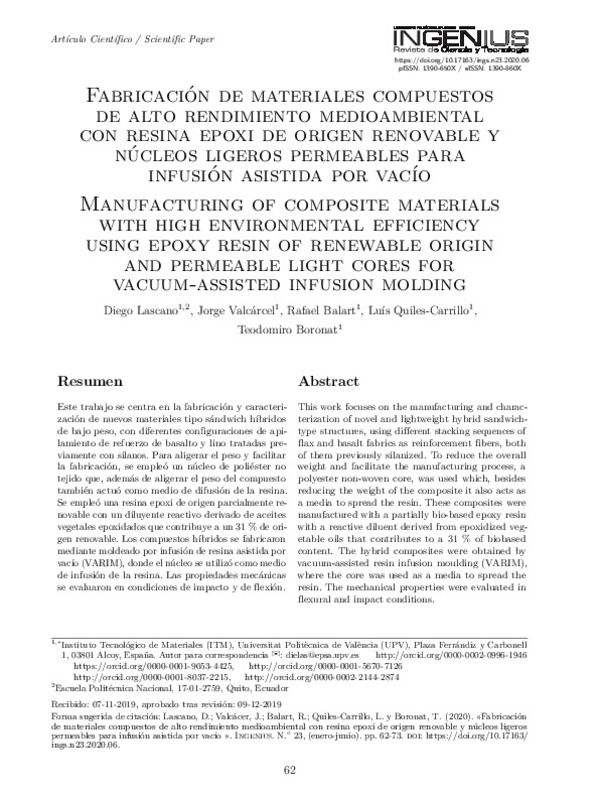JavaScript is disabled for your browser. Some features of this site may not work without it.
Buscar en RiuNet
Listar
Mi cuenta
Estadísticas
Ayuda RiuNet
Admin. UPV
Fabricación de materiales compuestos de alto rendimiento medioambiental con resina epoxi de origen renovable y núcleos ligeros permeables para infusión asistida por vacío
Mostrar el registro completo del ítem
Lascano-Aimacaña, DS.; Valcárcel, J.; Balart, R.; Quiles-Carrillo, L.; Boronat, T. (2020). Fabricación de materiales compuestos de alto rendimiento medioambiental con resina epoxi de origen renovable y núcleos ligeros permeables para infusión asistida por vacío. Ingenius. (23):62-73. https://doi.org/10.17163/ings.n23.2020.06
Por favor, use este identificador para citar o enlazar este ítem: http://hdl.handle.net/10251/161384
Ficheros en el ítem
Metadatos del ítem
| Título: | Fabricación de materiales compuestos de alto rendimiento medioambiental con resina epoxi de origen renovable y núcleos ligeros permeables para infusión asistida por vacío | |
| Otro titulo: |
|
|
| Autor: | Valcárcel, Jorge | |
| Entidad UPV: |
|
|
| Fecha difusión: |
|
|
| Resumen: |
[ES] Este trabajo se centra en la fabricación y caracterización de nuevos materiales tipo sándwich híbridos de bajo peso, con diferentes configuraciones de apilamiento de refuerzo de basalto y lino tratadas previamente con ...[+]
[EN] This work focuses on the manufacturing and characterization of novel and lightweight hybrid sandwichtype structures, using different stacking sequences of
flax and basalt fabrics as reinforcement fibers, both
of them ...[+]
|
|
| Palabras clave: |
|
|
| Derechos de uso: | Reconocimiento - No comercial - Compartir igual (by-nc-sa) | |
| Fuente: |
|
|
| DOI: |
|
|
| Editorial: |
|
|
| Versión del editor: | https://doi.org/10.17163/ings.n23.2020.06 | |
| Tipo: |
|









